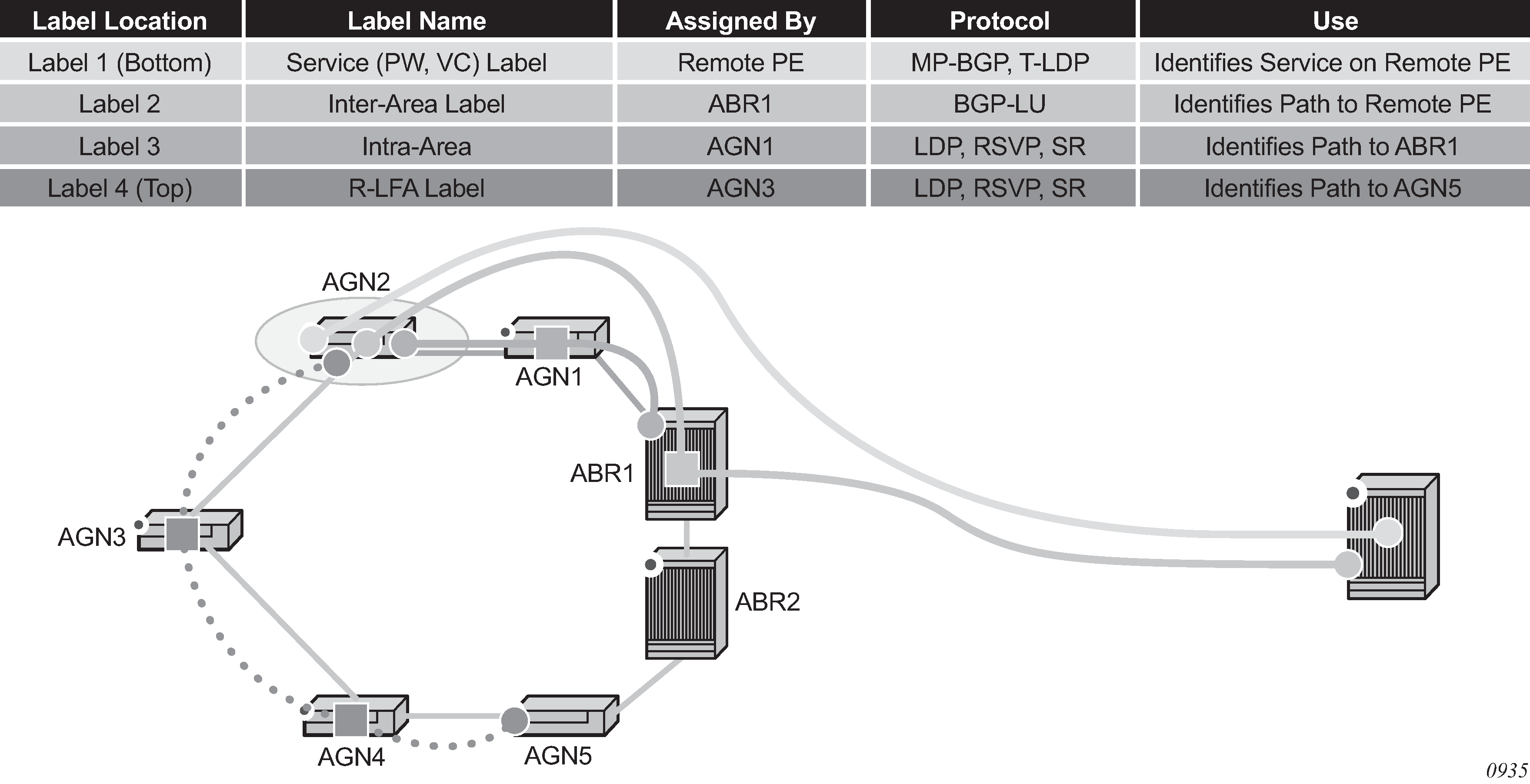One of the challenges in MPLS deployments across multiple IGP areas or domains, such as in seamless MPLS design, is the provisioning of FRR local protection in access and metro domains that make use of a ring, a square, or a partial mesh topology. In order to implement IP, LDP, or SR FRR in these topologies, the remote LFA feature must be implemented. Remote LFA provides a Segment Routing (SR) tunneled LFA next hop for an IP prefix, an LDP tunnel, or an SR tunnel. For prefixes outside of the area or domain, the access or aggregation router must push four labels: service label, BGP label for the destination PE, LDP/RSVP/SR label to reach the exit ABR/ASBR, and one label for the remote LFA next hop. Small routers deployed in these parts of the network have limited MPLS label stack size support.
Figure 1 illustrates the label stack required for the primary next hop and the remote LFA next hop computed by aggregation node AGN2 for the inter-area prefix of a remote PE. For an inter-area BGP label unicast route prefix for which ABR1 is the primary exit ABR, AGN2 resolves the prefix to the transport tunnel of ABR1 and therefore, uses the remote LFA next hop of ABR1 for protection. The primary next hop uses two transport labels plus a service label. The remote LFA next hop for ABR1 uses PQ node AGN5 and pushes three transport labels plus a service label.
Seamless MPLS with Fast Restoration requires up to four labels to be pushed by AGN2, as shown in Figure 1.

The objective of the LFA protection with a backup node SID feature is to reduce the label stack pushed by AGN2 for BGP label unicast inter-area prefixes. When link AGN2-AGN1 fails, packets are direct away from the failure and forwarded toward ABR2, which acts as the backup for ABR1 (and vice-versa when ABR2 is the primary exit ABR for the BGP label unicast inter-area prefix). This requires that ABR2 advertise a special label for the loopback of ABR1 that will attract packets normally destined for ABR1. These packets will be forwarded by ABR2 to ABR1 via the inter-ABR link.
As a result, AGN2 will push the label advertised by ABR2 to back up ABR1 on top of the BGP label for the remote PE and the service label. This keeps the label stack the same size for the LFA next hop to be the same size as that of the primary next hop. It is also the same size as the remote LFA next hop for the local prefix within the ring.